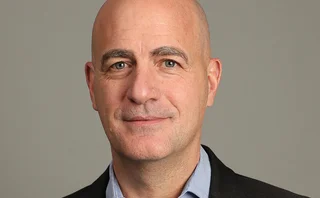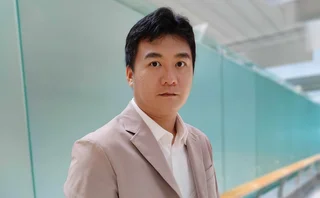
Exchange of the year: Singapore Exchange
Structured Products Asia Awards 2017: The exchange has turned around its warrants market and notched up a number of firsts, earning plaudits from judges and members alike

The launch, this July, of Daily Leverage Certificates (DLCs) by Singapore Exchange (SGX) was alone, in the eyes of our judging panel, justification for SGX to take this year’s exchange of the year award.
“For the structured product industry in Asia, the first Daily Leverage Certificate [DLC] is a watershed moment,” says a manager at an issuing firm. “It’s truly innovative in terms of structured product listings.”
DLCs, which were introduced in Europe in 2012 and allow investors to gain leveraged exposure to an underlying index, have proved hugely popular. The 10 certificates listed on the SGX by Societe Generale offer exposure to the MSCI Singapore, Hang Seng and Hang Seng China Enterprises indexes, leveraged three or five times. Compared with options and warrants, which involve the complexity of time decay, implied volatility and margin calls, DLCs provide a simple means for investors to take leveraged bets.
“Asian investors have shown a strong appetite for leveraged products, as demonstrated by the local structured warrants market, the success of [contracts for difference] and leveraged and inverse funds in the region,” says Luuk Strijers, head of products at SGX. “We think that the transparency and simplicity of the DLCs listed on SGX offer a fresh new trading option for investors looking to capture short-term market moves.”
However, while the products may be simple, the process of listing them was not. SGX first approached the broker community in early 2016, and product development involved close collaboration with authorities. “With leverage involved, that naturally triggers more focus from the regulator,” says Strijers.
A month after the DLCs launch and “the initial volumes look promising,” he says, noting that on one day in early August, volumes exceeded S$50 million ($37 million). “There is sufficient appetite at this stage… but there is still a lot more that can be done to educate investors about the product.”
The venue has also innovated in other product types, becoming the first exchange in the world to list a smart beta exchange-traded fund (ETF) based on an index of real-estate investment trusts (Reits). Last October, Phillip Capital Management listed its Asia Pacific ex-Japan Reits ETF, based on a customised dividend-weighted Reits index. It attracted S$43 million in its initial offer period, although subsequent outflows saw assets under management fall to S$33 million by mid-August. The product was followed in March by a Reits ETF issued by Nikko Asset Management and Straits Trading, which has attracted S$73 million.
Meanwhile, SGX has also seen considerable success in turning around its warrants business. Prior to 2008, daily warrants volumes were averaging S$150 million, but in the wake of the financial crisis they had slumped to just S$20 million by 2015. After 18 months of “perseverance”, daily volumes recovered to S$60 million in the first half of 2017 with peaks of around S$100 million – up 143% year on year.
“It’s been a key success story for us,” says Strijers. He attributes this partly to efforts to educate the marketplace, as well as to some new tools made available on the exchange’s website, such as real-time futures prices that make the underlying contracts more accessible to traders. “But the key reason has been the willingness of issuers to provider competitive bids and offers in the market,” he says.
For ETFs, SGX has launched a committed market-maker (CMM) scheme, which rewards market-makers that meet certain criteria in terms of bid-offer spread, volumes offered and daily turnover. “The more focused the issuer is in providing competitive bids and asks, the better the market quality and the greater the interest from investors,” says Strijers.
That effort has had measurable effect in SGX’s ETF segment. The exchange has selected 10 ETFs to be included in an enhanced CMM+ programme, where market-makers receive a rebate against their exchange fees in exchange for meeting certain market quality metrics. Since introducing the programme, bid-ask spreads have narrowed by more than 20%, he says.
Looking forward, SGX is also considering relaunching leveraged and inverse ETFs. Similar to DLCs, these products offer either a multiple or the opposite of the return of the underlying on a daily basis. SGX listed the first inverse product in Asia in 2009 and it remains tradable today. Regulatory concerns have meant there have been no such listings since, but the Monetary Authority of Singapore recently revised its guidance and the products have been given the green light. “We’re working with potential issuers,” says Strijers, without elaborating.
The main priority for the exchange is continuing investor education. “That’s where the biggest challenges lie – making sure that all investors, especially retail, are aware of the risk-reward profile of our various products,” he says. “There is still a lot more that can be done.”
Only users who have a paid subscription or are part of a corporate subscription are able to print or copy content.
To access these options, along with all other subscription benefits, please contact info@risk.net or view our subscription options here: http://subscriptions.risk.net/subscribe
You are currently unable to print this content. Please contact info@risk.net to find out more.
You are currently unable to copy this content. Please contact info@risk.net to find out more.
Copyright Infopro Digital Limited. All rights reserved.
You may share this content using our article tools. Printing this content is for the sole use of the Authorised User (named subscriber), as outlined in our terms and conditions - https://www.infopro-insight.com/terms-conditions/insight-subscriptions/
If you would like to purchase additional rights please email info@risk.net
Copyright Infopro Digital Limited. All rights reserved.
You may share this content using our article tools. Copying this content is for the sole use of the Authorised User (named subscriber), as outlined in our terms and conditions - https://www.infopro-insight.com/terms-conditions/insight-subscriptions/
If you would like to purchase additional rights please email info@risk.net
More on Awards
Joining the dots: banks leverage tech advancements for the future of regulatory reporting
The continued evolution of regulatory frameworks is creating mounting challenges for capital markets firms in achieving comprehensive and cost-effectiveawa compliance reporting. Regnology discusses how firms are starting to use a synthesis of emerging…
Markets Technology Awards 2024 winners' review
Vendors spy opportunity in demystifying and democratising – opening up markets and methods to new users
Derivatives house of the year: JP Morgan
Risk Awards 2024: Response to regional banking crisis went far beyond First Republic
Risk Awards 2024: The winners
JP Morgan wins derivatives house, lifetime award for El Karoui, Barclays wins rates
Best product for capital markets: Murex
Asia Risk Awards 2023
Technology vendor of the year: Murex
Asia Risk Awards 2023
Best structured products support system: Murex
Asia Risk Awards 2023
Energy Risk Asia Awards 2023: the winners
Winning firms demonstrate resiliency and robust risk management amid testing times
Most read
- Top 10 operational risks for 2024
- Top 10 op risks: third parties stoke cyber risk
- Japanese megabanks shun internal models as FRTB bites







